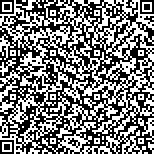| 摘要: |
| 用地高辛( DIG) 标记的WSSV DNA 探针斑点杂交与原位杂交技术, 在中国对虾、斑节对虾、南美白对虾、刀额新对虾、脊尾白虾、天津厚蟹、日本大眼蟹体内检测到了WSSV, 它们是WSSV 的天然宿主; 在经人工感染的哈氏美人虾、短脊鼓虾、克氏原螯虾、肉球近方蟹、滕壶体内检测到了WSSV; 在球形侧腕水母、病虾池的桡足类等浮游生物、卤虫无节幼体以及人工浸泡感染卤虫成体体内没有检测到WSSV。经原位杂交检测, 虾类的甲壳下上皮、胃上皮、附肢、造血组织、鳃等组织器官均可被WSSV 侵染, 其中甲壳下上皮和鳃对WSSV 敏感; 蟹类的甲壳下上皮和鳃对WSSV 敏感; 在中国对虾、南美白对虾、脊尾白虾、注射感染的克氏原螯虾的精巢中, 精荚的结缔组织细胞和血细胞呈阳性, 在中国对虾、脊尾白虾以及注射感染的短脊鼓虾的卵巢中, 结缔组织细胞和滤泡细胞被WSSV 感染。 |
| 关键词: 白斑综合症病毒, 核酸探针, 宿主 |
| DOI: |
| 分类号: |
| 基金项目:国家重点基础研究规划项目"对虾病毒病流行的细胞与分子学机理课题"资助, G1999012002 号; 国家"九五"攻关项目"对虾病毒生态发病原因及检测技术研究子专题"资助, 96-005-03-01-02 号 |
附件 |
|
| INVESTIGATION INTO THE HOSTS OF WHITE SPOT SYNDROME VIRUS(WSSV) |
|
LEI Zhi-Wen1, HUANG Jie1, SHI Cheng-Yin1, ZHANG Li-Jing1, YU Kai-Kang2
|
|
1.The Key Laboratory of Sustainable Utilization of Marine Fishery Resource, Ministry of Agriculture, Yellow Sea Fisheries Research Institute, Chinese Academy of Fishery Sciences;2.Fisheries College , Ocean University of Qingdao
|
| Abstract: |
| Specimens of 16 aquatic species were examined by dot blot and in situ hybridization with DIG labeled WSSV DNA probe. WSSV positive cases were found in the native specimens of Penaeus chinensis, Penaeus monodon, Exopalaemon carinicauda, Penaeus vannamei, Metapenaeus ensis, postlarval P. chinensis, Helice tridens tientsinensis, and Macrophthel japonicus. Other positive cases were also observed by dot blot and in situ hybridization in the WSSV inoculums-injected crustaceans Alpheus brevicristautus, Callianassa harmandi , Hemigrapsus sanguineus , Balanus sp. , and Procamburas clarkia. No positive case was found in the specimens of WSSV inoculums-soaked Artemia, native mauplii of Artemia and native Pleurobrachia globe by in situ hybridization. Contrasty WSSV infected lesions were present, as detected by in situ hybridization, in some tissues, such as gills, pleopods, stomach, and cuticular epidermis, of shrimps, gills and epithelium of crabs, and few cells in connective tissue of Balanus sp. . The epithelial cells and gills are the most sensitive to WSSV. In the spermary of P. chinensis, P. vannamei, Exopalaemon carinicauda and artificially infected P. clarki, WSSV positive cells were located in the connective layers surrounding the seminiferous tubules and spermatophore according to in situ hybridization; WSSV positive cells were also found in the follicle cells and connective cells of the ovaries of P. chinensis, E. carinicauda and artificially infected A. brevicristautus. |
| Key words: White spot syndrome virus(WSSV), DNA probe, Host |
